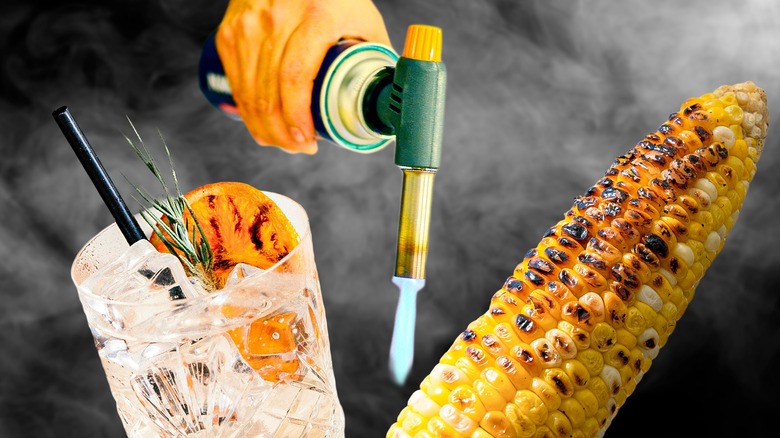Resembling a mini flame thrower, a culinary torch is likely one of those kitchen tools that you’ve had on your shopping list for ages, but haven’t been able to justify purchasing yet. Much like egg separators, corn kernel strippers, and pineapple corers, culinary torches seem as if they fall into the category of nice-to-have tools rather than essential kitchen equipment. That’s especially true if you only associate them with their most famous use, as a tool for browning crème brûlée.
With their ability to generate quick, concentrated heat, culinary torches are indeed well-suited for the demands of crème brûléeing, but their versatility extends far beyond this iconic dessert. We’ve discovered more than a dozen clever ways to put this nifty tool to work, no matter what you’re cooking up. Picture browning the top of macaroni and cheese, giving French onion soup an extra touch, roasting veggies, or even making indoor s’mores. As you can see, the possibilities are as diverse as your culinary imagination. Uncover these creative uses and more by diving into the rest of this article!
Give stovetop macaroni and cheese a crust
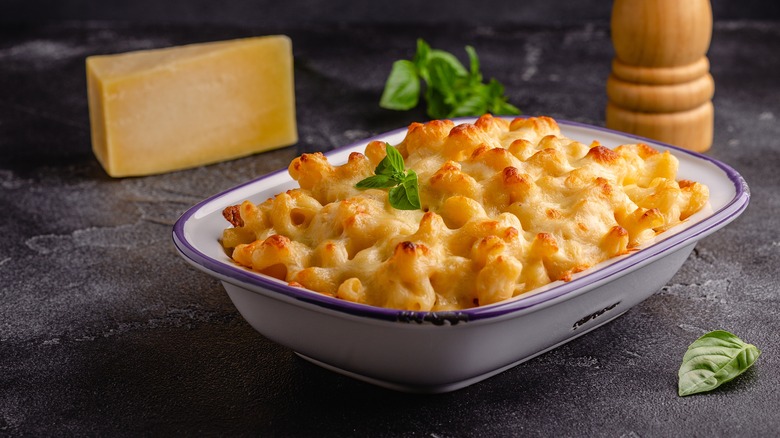
Whether it’s forgetting to salt the pasta water or picking the wrong cheese, there are loads of mistakes that you ought to avoid with macaroni and cheese. But one of the worst blunders? Skipping out on that crispy crust. Baking mac and cheese in the oven makes this step all the easier — just sprinkle extra cheese and breadcrumbs on top, then broil for a few minutes.
Now, if you’re making a stovetop version of this dish, getting that same satisfying crunch can be a bit trickier. You could transfer the mac and cheese to an oven-safe dish, wait for the broiler to heat up, and try to maneuver it under the flame. But there’s a simpler solution: grab your culinary torch.
Just sprinkle breadcrumbs over your finished pasta and then give them a bit of heat. Once they turn golden brown and the cheese starts bubbling, it’s time to turn the brûlée torch off and dig in. This method has its perks, but keep in mind that it can go wrong fast. To avoid ending up with charred pasta or cheese (and that burnt taste), make sure the flame stays at least a few inches away from the food and always keep a careful eye on what’s happening.
Roast tomatoes and peppers with ease
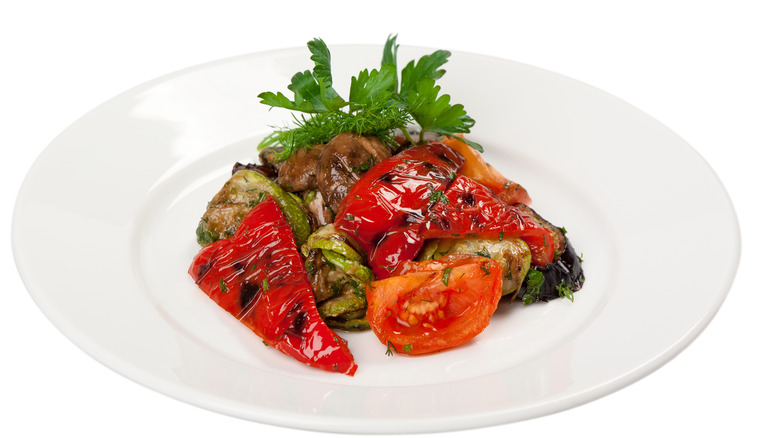
Whether you’re whipping up a flavorful risotto, crafting classic bruschetta, or assembling mouthwatering sandwiches, roasted tomatoes and peppers are sure to steal the show. In terms of appearance, their flesh takes on a darker, wrinkled look, revealing the tender flesh below. Now, let’s talk flavor — roasting not only boosts these fruits’ natural sweetness but also adds a rich, smoky complexity to a final meal. We could go on, but the point is that roasted nightshades are the bomb.
But let’s face it: we don’t always have the luxury of waiting 30 minutes for the magic to unfold in the oven. Thankfully, a culinary torch can be a quick substitute for an oven or grill. To make this work, first place tomatoes and peppers on a flame-resistant roasting pan and then give them a blast with the torch until the skins blacken slightly. Keep in mind that the flavors might not be as nuanced as produce that’s been roasted for a longer period in the oven, but it’s still a handy shortcut when time is of the essence.
Whip up indoor s’mores
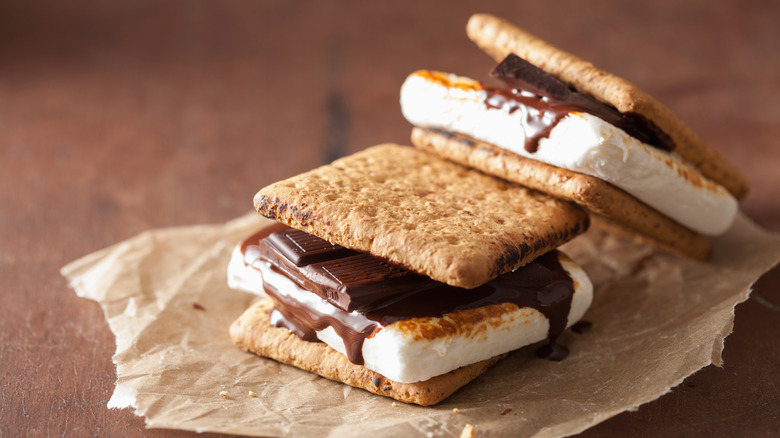
Olga Miltsova/Shutterstock
Instead of dragging your friends to a campsite or battling uncooperative weather outdoors, consider an indoor twist on classic s’mores. Baked in a cast iron skillet and served with a side of graham crackers, s’mores dip is one indoor option. But for the die-hard s’mores enthusiasts, the culinary torch version offers a unique twist on the classic treat.
Here’s how it’s done: thread a few marshmallows onto a metal or wooden skewer (watch out for flames with the wooden ones!). Hold the skewer in one hand and the torch in the other, making sweeping motions over the surface of the marshmallows. Take the extra step of rotating them for an even roast. In less than a minute, you’ll achieve that perfect just-removed-from-the-fire brown hue. Once the marshmallows are soft and golden brown, sandwich them between two chocolate-topped graham crackers and take a satisfying bite. Who knows? With s’mores this delicious, you may never need to go camping again.
Brown other desserts
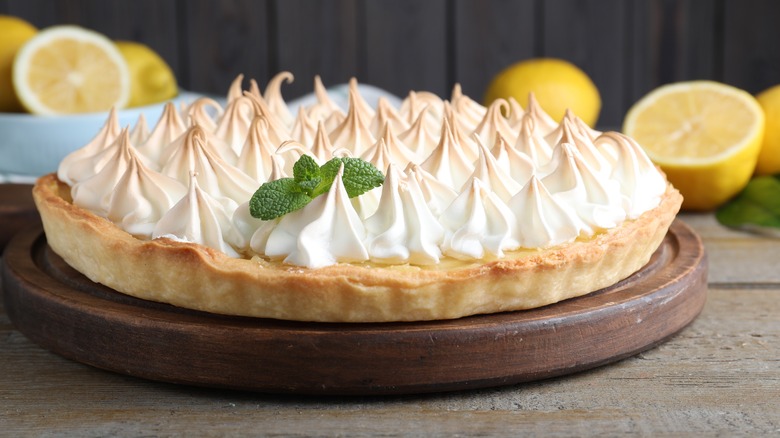
New Africa/Shutterstock
Crème brûlée isn’t the only dessert that benefits from a tempting caramelized sugar topping. Treats like lemon meringue pie and baked Alaska also undergo a delightful upgrade thanks to the wonders of culinary torches. When it comes to lemon meringue, a quick pass of the torch has several advantages. Visually, toasting the meringue to a golden brown color creates an appealing contrast with the white portions underneath. This simple technique also adds stability to the meringue by partially cooking its outer layer, preventing it from weeping. In terms of flavor, toasting can introduce a smoky element that complements the tangy lemon filling and rich, buttery crust.
Baked Alaska, another meringue-topped delight, likewise thrives with a bit of browning. The crispness of the toasted meringue provides an intriguing textural contrast with the soft, velvety ice cream below. If it’s consumed quickly, the lingering warmth from toasting also complements the chilly ice cream, creating a delightful mouthfeel. Remember to be cautious with the torch in both cases. Keep it about six inches away from the meringue and use quick, circular motions to avoid any unintentional charring.
Warm mixing bowls
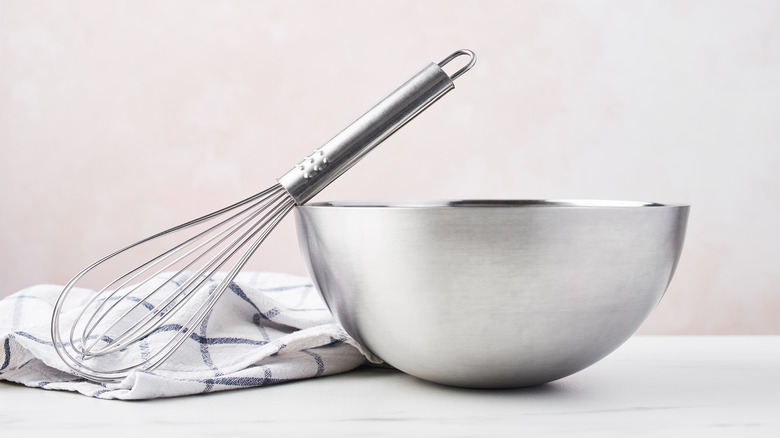
xMarshall/Shutterstock
Stand mixers are a fantastic way to cream butter and sugar together without wearing out your biceps. But for those of us who aren’t ready or able to invest in one, this handy culinary torch trick provides a cheap, easy solution that’s almost as effective.
Before adding butter and sugar to your mixing bowl, use a torch to gently warm up the sides and bottom of the bowl. The leftover heat will warm the butter just enough to make creaming a breeze. This goes without saying, but just in case anyone needs to hear it: this hack only works for metal or heat-resistant glass bowls. Do not — we repeat, do not — use a blow torch on a plastic mixing bowl. With that PSA out of the way, try this trick and see how much easier making brown butter chocolate chip cookies can be.
Caramelize ham
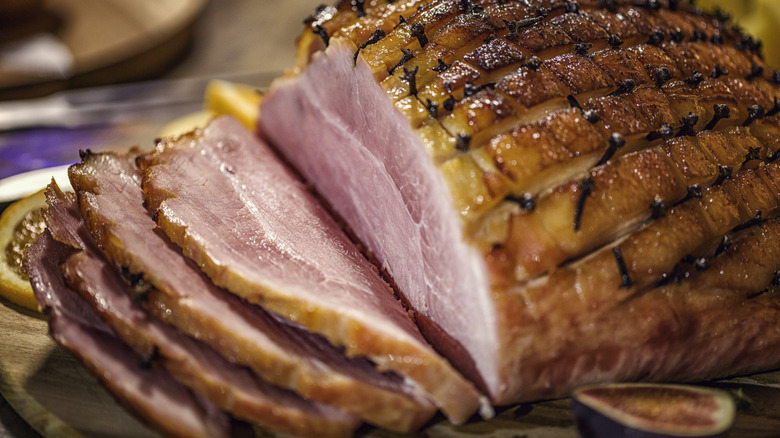
Gmvozd/Getty Images
Glazed spiral-cut ham is a treat for the senses and a trick that’s perfect for festive holidays and special weekend dinners alike. The sugary glaze not only adds a dazzling sheen to the meat’s exterior but also harmonizes with the pork’s saltiness for a flavor experience that hits all the right notes. However, the real magic happens when the glaze heats up, transforming its sugary sweetness into caramelized perfection.
For best results, many recipes suggest baking the ham to 120 degrees Fahrenheit before applying the glaze and then putting it back in the oven for an additional 10 minutes. Typically, a second coat of the glaze is added next, before placing the ham under the broiler for a few more minutes. Luckily, having a culinary torch on hand allows you to skip the final step. Using the torch to melt the glaze not only achieves nearly identical results but also saves you the hassle of maneuvering a heavy pan in and out of the oven.
Prepare a tuna melt
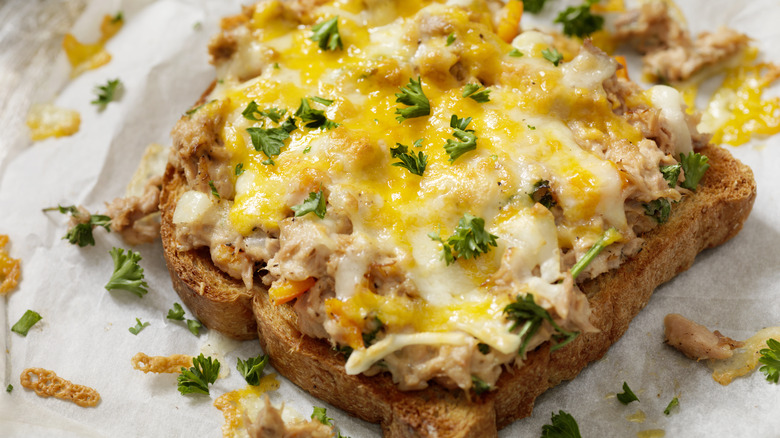
Lauripatterson/Getty Images
At first glance, a tuna melt isn’t that impressive. Essentially, it’s a hot sandwich featuring tuna salad topped with melted cheese. And yet, there’s an inexplicable charm to this lunchtime favorite that keeps us hooked. We don’t know if it’s the comfort food factor or the simplicity of preparation, but either way, tuna melts unquestionably hold their ground in the world of sandwiches.
In the past, getting that ideal melt on cheddar or provolone required either a toaster oven or a reliable broiler. Fortunately, that’s no longer a necessity if you happen to have a culinary torch on hand. To try out this nifty trick, assemble your tuna melt as usual. Then, position the torch a few inches away from the cheese and sweep it back and forth until the cheese starts to brown and bubble. In just a few movements, you’ll have unlocked a new level of culinary convenience.
Fake grill marks
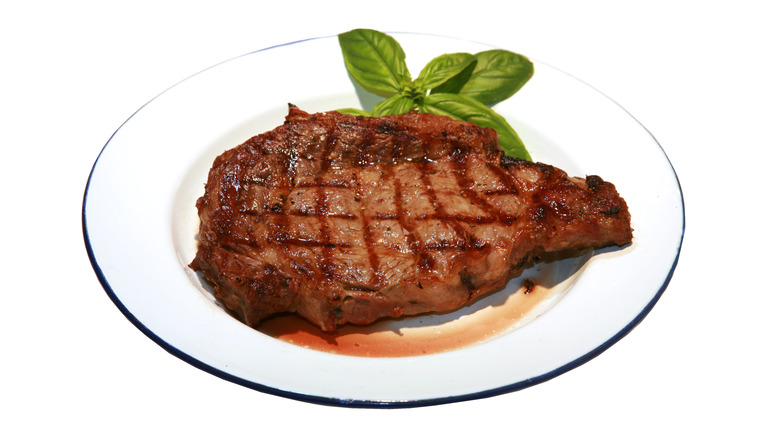
mikeledray/Shutterstock
Whether you realize it or not, you love grill marks. Often found on meat or vegetables, these charred cross-hatches not only catch your eye but also make you think of delicious smoky barbecue flavor. Unfortunately, some restaurants resort to tricky tactics, using what’s effectively a branding machine to fake grill marks and make lower-quality burgers seem better than they really are. We’re not into deceptive practices, but we at least appreciate the time-saving motivations behind the practice.
That’s where using a culinary torch to create grill marks can come in handy. It’s a perfect compromise between tending the grill and resorting to dishonest shortcuts. To take advantage of this hack, simply hold the torch away from the meat and make long vertical motions until marks appear. It’s a cool trick, but be careful not to overdo it. Too much torching risks searing the meat and giving it a bitter flavor.
Craft burnt sugar garnishes
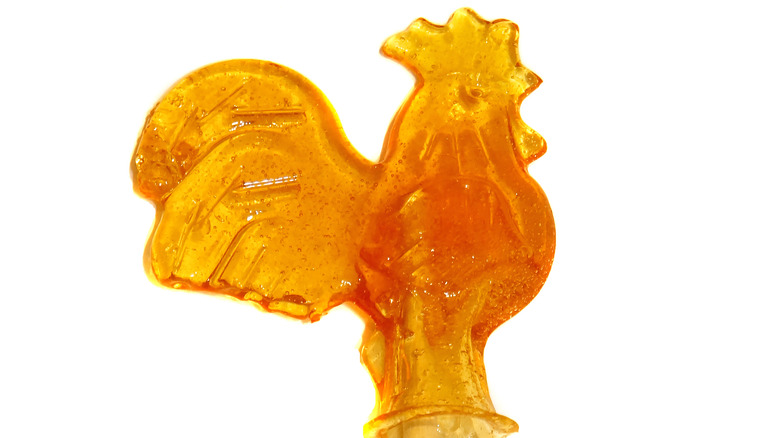
Chiffanna/Shutterstock
Cookie cutters aren’t just for sugar cookies anymore. Bartenders have discovered a slew of creative uses for this common kitchen implement, from fashioning eye-catching fruit garnishes to stenciling imaginative shapes onto foamy cocktails and crafting unique ice cubes.
But there’s one more trick that bartenders have up their sleeve. Paired with a bit of sugar and a culinary torch, cookie cutters can be used to create impressive burnt sugar garnishes. Recreate them at home by greasing a metal cookie cutter and placing it on a non-stick silicone baking sheet. Sprinkle sugar inside the mold, then use the torch to melt and brown the sugar (just make sure to stop before it turns black). Let the cookie cutter cool, remove it, and voilà! You’ll have a delicate garnish that’s perfect for adding a final touch to cocktails, hot chocolate, ice cream, and more.
Torch fruit
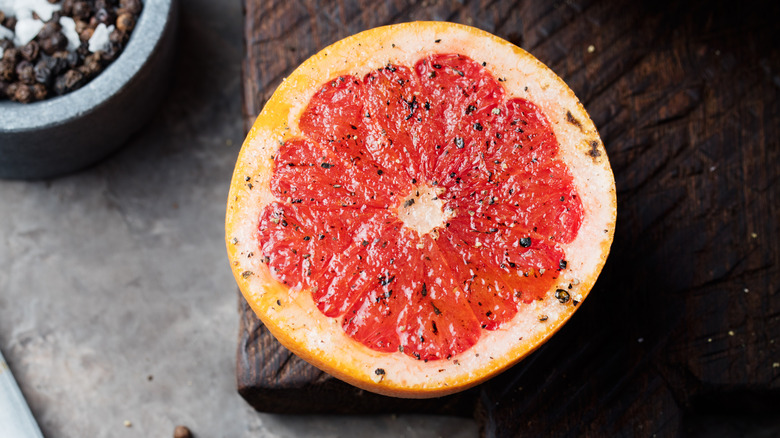
Anna_Pustynnikova/Shutterstock
Except for occasions where you’re crafting bananas Foster, the idea of setting fruit on fire might not have crossed your mind. No judgment here if you haven’t crossed that culinary line, but we’re encouraging you to give it a shot with the help of a brûlée torch. A culinary torch not only makes this possible, but it also works its magic on the look and taste of many varieties of fruit without resorting to heavy ingredients like butter or alcohol.
The flame of a culinary torch heats the natural sugars in the fruit, which can begin to caramelize and create a browned exterior and complex flavor notes. While sprinkling a bit of sugar on the fruit’s surface is optional, it can elevate this effect even further.
This technique is particularly effective with fruits that are naturally high in sugar, like figs, pears, and bananas. But, for many, grapefruit is the star performer when it comes to brûléed fruits. After torching, the tart citrus notes combine effortlessly with the sweetness of the caramelized surface to create an entirely new flavor experience you have to try.
Give breadcrumbs a glow-up
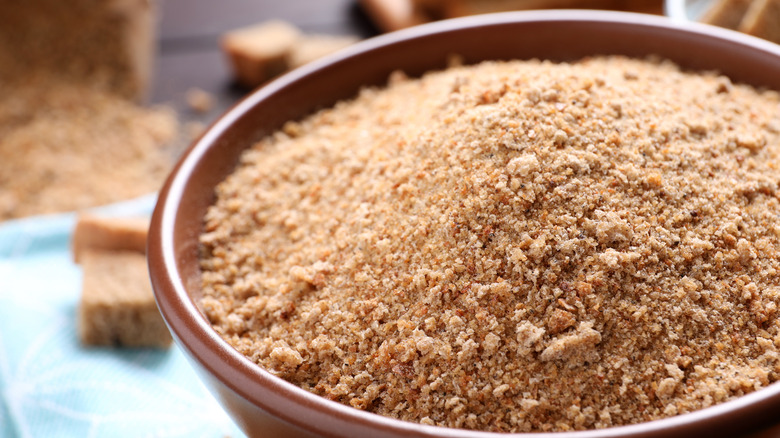
New Africa/Shutterstock
Regardless of which type of breadcrumbs you have on hand, a culinary torch can take them from bland to bodacious in less than a minute. Here’s the lowdown: most breadcrumbs found in grocery stores are crafted from dried and ground white bread with the crust removed. Some might be toasted before they’re turned into crumbs, but that’s not always the case.
Regardless of the toasting status of your breadcrumbs, the simple fact remains that they’re generally not massively exciting from a flavor perspective. Thankfully, a quick blast from a culinary torch is all you need to enhance their appearance and taste. First off, toasting breadcrumbs with a culinary torch turns them a beautiful golden brown color that makes dishes like casseroles and baked fish pop. Moreover, the rapid burst of heat can help to impart a subtle smoky flavor to the breadcrumbs, adding depth and complexity to whatever dish they grace.
Finish off French onion soup
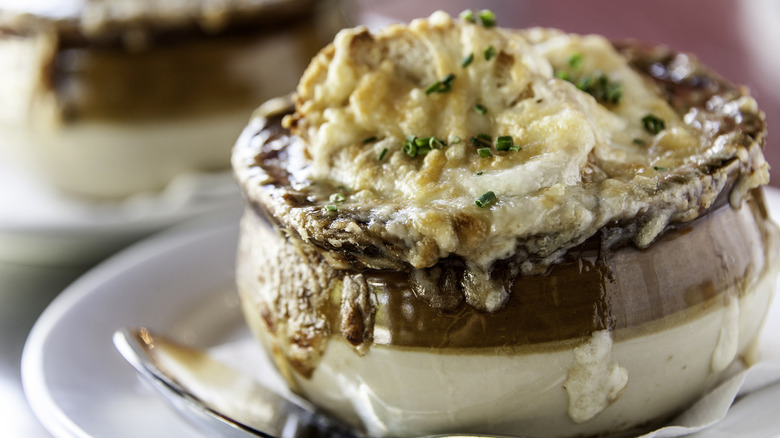
Juanmonino/Getty Images
Let’s get one thing straight — we’re big fans of French onion soup. It’s the perfect blend of comfort and heartiness, with flavors that include sweet caramelized onions, savory umami beef broth, and the richness of Gruyère. Together, they are hard to beat. But, for all its virtues, there’s a major hiccup with French onion soup. That would be the somewhat cumbersome process of melting the cheese on top of the bread.
Typically, French onion soup recipes call for sprinkling cheese over sliced bread and then toasting or broiling it in the oven until the cheese gets that perfect melt. Yet handling a cumbersom eroasting pan is rarely a cakewalk, and it gets even trickier when you’re also keeping an eye on a simmering pot of soup.
Enter the culinary torch to save the day. With one in your hand, you can forget the oven juggling act. Just give the cheese-topped bread a quick torching seconds before serving. You’ll not only save yourself some effort but your guests won’t even notice the difference.
Simulate wok hei for stir fries
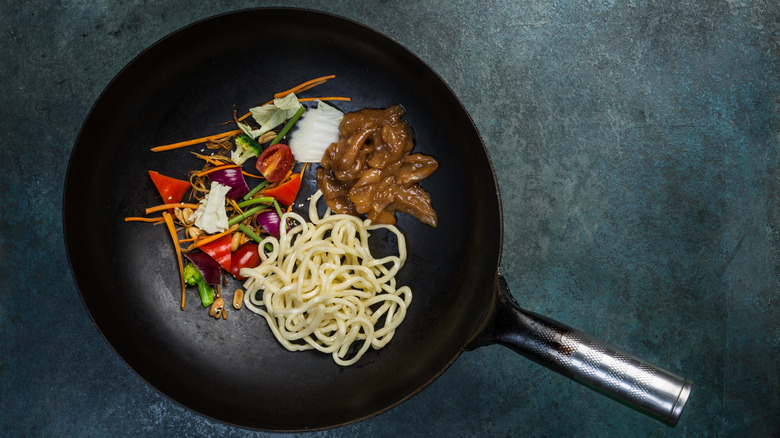
MediaFetish/Shutterstock
Translated from Cantonese, “wok hei” means “breath of the wok.” Beyond its poetic charm, this term captures the distinct flavor that graces restaurant stir-fries. Imagine a blend of smokiness, aromatic richness, and caramelized goodness — that’s wok hei. It’s a bit tricky to put into words, but once you taste the real thing, you’ll recognize wok hei instantly.
This captivating flavor emerges from shallow stir-frying at extremely high temperatures. This process triggers the Maillard reaction, a heat-induced chemical change that unlocks savory umami notes. Sadly, achieving this culinary magic at home is often a challenge due to stovetop heat limitations and subpar cookware. But fear not, as there’s a clever workaround using a culinary torch. To take advantage of this trick, arrange your stir-fry ingredients in a single layer on a baking sheet and give them a quick blast of heat from the culinary torch. With a few back-and-forth sweeps of the torch, you’ll add a subtle smokiness, creating a homemade imitation of the highly sought-after wok hei experience.
Make delectable oatmeal toppings
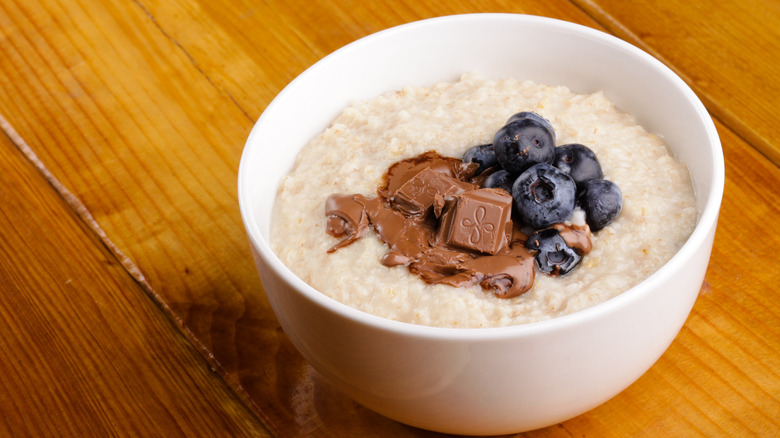
Kencana Studio/Shutterstock
Putting aside its health benefits and convenience, oatmeal isn’t going to win any trophies at the exciting food awards. But instead of looking at oatmeal’s blandness as a downside, we prefer to think of it as a blank canvas that’s just waiting for us to craft the breakfast of our dreams. Whether you’re in the mood for savory vibes with eggs and sautéed veggies or leaning towards sweetness with fresh fruit and chocolate, the wide world of oatmeal ingredients is your oyster. In other words, you’re limited only by your imagination.
Take things a step further by using a culinary torch to breathe new life into your favorite toppings. Start simple by dusting your bowl of oats with baking spices like cinnamon and nutmeg. Give them a bit of heat and you’ll notice a gentle smoky flavor emerge alongside the expected warming aromas. From there, venture into more intricate mix-ins like melted chocolate, caramelized bananas, and velvety nut butter to take your oatmeal experience to new heights.
Upgrade fruit compote
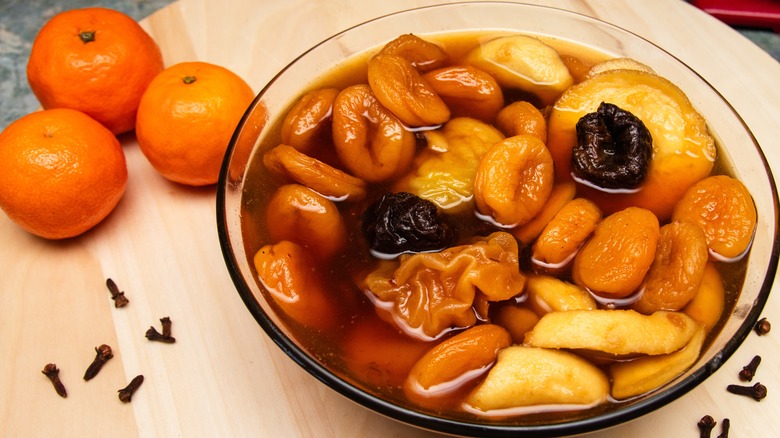
Kuba Kwiatkowski/Shutterstock
Move over, coulis and chutney. There’s a new fruit sauce in town, and it goes by the name of compote. If you’re not familiar with compote, it’s essentially a blend of fruit and sugar that’s been gently simmered until it turns syrupy. Despite its simplicity, compote is a versatile sauce that can effortlessly enhance just about everything, from toast to ice cream.
While there’s hardly any way to find fault with this fruity sauce, we’re always up for a bit of improvement. So, here’s an idea: take your next batch of fruit compote to the next level by dousing it with a splash of flamed liqueur. We recommend sweet varieties like Grand Marnier and triple sec as their flavors mesh particularly well with fruit.
To further highlight the citrusy orange notes in the alcohol, use a culinary torch to briefly flame the liqueur (of course, being careful to set up away from flammables and always keeping a kitchen fire extinguisher handy). Then, pour the warmed liquid over the fruit compote, and get ready to be amazed by the incredible flavors that can emerge from such basic ingredients.
Char corn
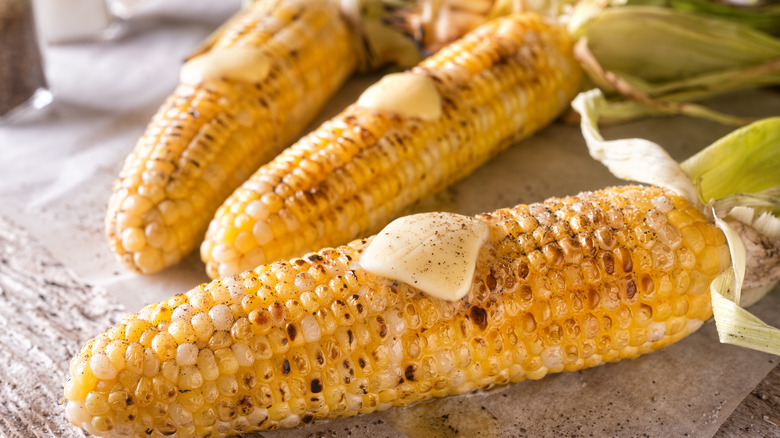
Foodio/Shutterstock
Despite its unassuming appearance, corn is a food that tends to polarize people. Some insist on enjoying it on the cob straight from the grill, while others favor it in creamy preparations or corn chowder. Regardless of your corn preferences, one thing is indisputable: charred corn is the ultimate and only way to fully appreciate this summery vegetable.
Now that we’ve settled that, let’s explore the magic of using a culinary torch to transform ordinary yellow corn into a smoky, flavorful delight. It’s as simple as placing ears of corn on a flame-proof surface and directing the heat toward the kernels until they take on a beautifully charred look. Once that step is complete, simply cut the flame-kissed kernels off the cob and use them in dishes like grilled shrimp served with charred corn and mango salsa or the Mexican street corn salad known as esquites.



